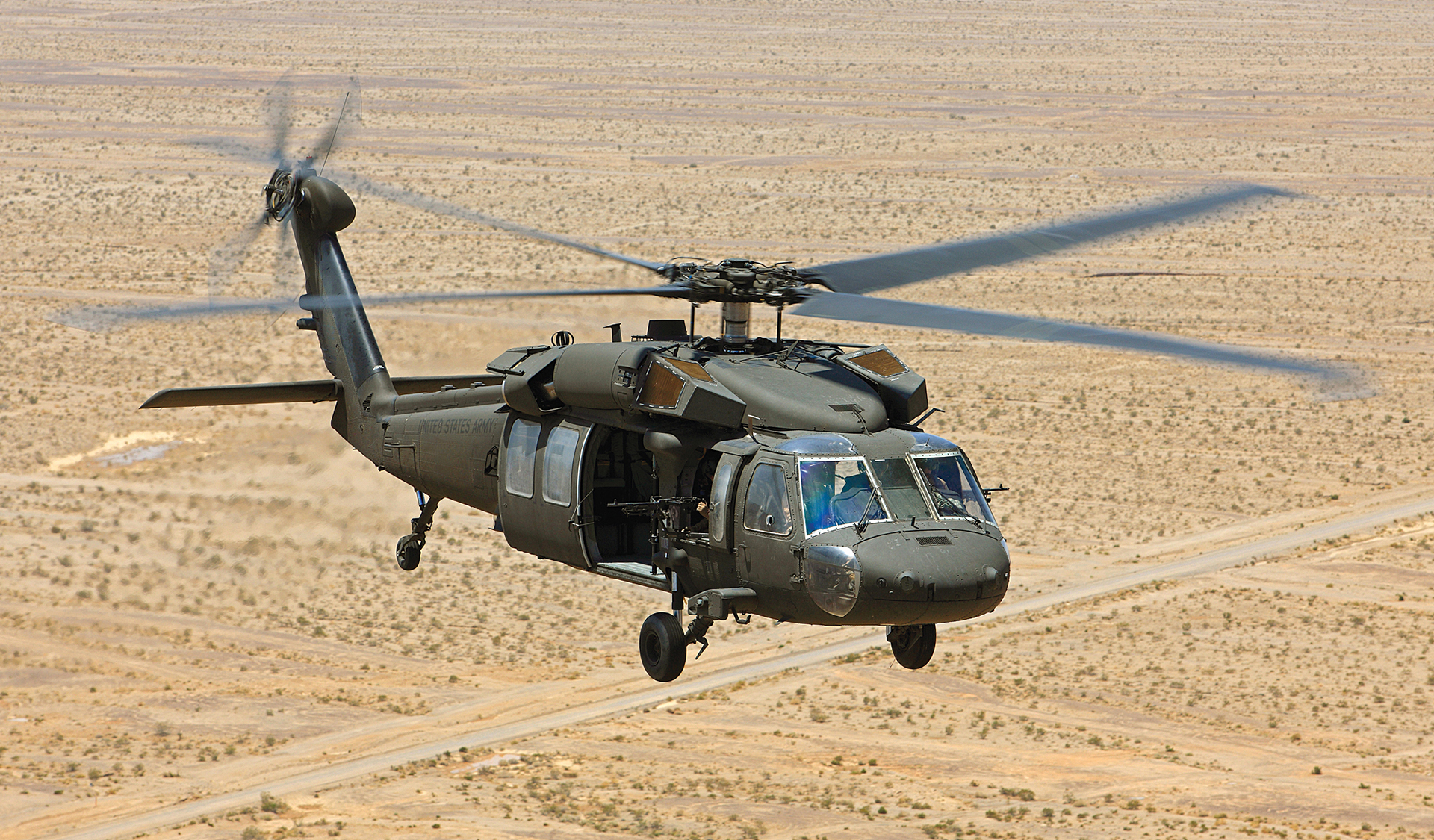Flying High: UH 60 Helicopter Safety And Security Protocols You Need To Know
Flying High: UH 60 Helicopter Safety And Security Protocols You Need To Know
Blog Article
Understanding the Mechanics and Engineering Behind Uh 60 Helicopters
The UH-60 helicopter, commonly referred to as the Black Hawk, stands as a peak of modern-day rotorcraft technology, symbolizing a mix of durable design and elaborate auto mechanics. From its beginning to its existing iterations, the development of this airplane showcases a blend of technology and practicality. As we peel back the layers of the UH-60's style, a globe of detailed systems and meticulous engineering comes to light. Comprehending the auto mechanics and design behind this functional aircraft unveils a realm where precision satisfies power, and where each element plays a critical duty in attaining flight.
History of UH-60 Helicopters
The history of UH-60 helicopters traces back to the late 1970s when the United States Army sought a versatile and innovative utility helicopter to replace its aging fleet. In response to this need, the Sikorsky Airplane Firm developed the UH-60 Black Hawk helicopter. Presented in 1979, the UH-60 swiftly came to be a staple in army procedures due to its impressive capacities.
The UH-60 was created to excel in a selection of objectives, including army transport, clinical emptying, digital war, and special procedures. Its ability to adjust to different roles made it a beneficial asset to the united state Army and other army forces worldwide
Throughout the years, the UH-60 system has gone through a number of upgrades and variations to boost its efficiency and equal evolving objective requirements. These helicopters have seen extensive solution in problems such as the Gulf War, Afghanistan, and Iraq, showcasing their integrity and flexibility in varied operational atmospheres. The UH-60's abundant history is a testimony to its long-lasting legacy as a leading energy helicopter.

Engine and Power Systems
Making use of sophisticated propulsion modern technology, UH-60 helicopters are furnished with sophisticated engine and power systems to ensure optimum efficiency and dependability in a series of operational circumstances. The UH-60, frequently referred to as the Black Hawk, is powered by two General Electric T700-GE-701D engines, each efficient in providing up to 1,940 shaft horsepower. These turboshaft engines provide the essential drive for the helicopter to perform its missions effectively, consisting of troop transportation, medical evacuation, and combat assistance.

Blades System and The Rules Of Aerodynamics
Exactly how do the blades system and aerodynamics of UH-60 helicopters contribute to their operational efficiency and flight capacities? The blades system of the UH-60 helicopter plays an essential role in providing lift and propulsion. The UH-60 features a four-bladed, totally expressed blades system that enables high maneuverability and stability throughout trip. This style allows the helicopter to carry out a vast array of objectives, from transport and medical discharge to deal with operations.
The rules of aerodynamics likewise play a key duty in the efficiency of UH-60 helicopters. The streamlined fuselage and blades blade style decrease drag, permitting the helicopter to attain higher rates and much better fuel performance. The aerodynamic design of the UH-60 additionally adds to its ability to run in diverse ecological problems, including hot temperature levels and high elevations.
Avionics and Flight Control Systems

In its elaborate sychronisation with the blades system and the rules of aerodynamics of UH-60 helicopters, the avionics and flight control systems form a vital network of modern technologies shaping the aircraft's functional capacities. In the UH-60, these systems include digital screens, communication radios, General practitioner navigating, climate radar, and auto-pilot systems.
The trip control systems of the UH-60 are in charge of translating the pilot's inputs into the proper modifications to the blades system, making certain secure trip and maneuverability. These systems include hydraulic actuators, servos, and computers that interact to manage the primary and i loved this tail rotors, in addition to other flight control surfaces. By exactly handling the helicopter's flight dynamics, these systems enable pilots to carry out a large variety of objectives, from transport and search-and-rescue to fight operations, with precision and self-confidence.
Duty and Applications in Aeronautics
Avionics systems in UH-60 helicopters incorporate a range of digital systems that aid in navigating, interaction, tracking, and regulating various airplane features. These systems include digital display screens, autopilot systems, interaction radios, General practitioner navigation tools, Look At This and weather radar. Furthermore, these systems include security attributes such as autopilot settings, surface awareness advising systems, and stability enhancement systems to enhance the general safety and functional capacities of the UH-60 helicopters in different missions, consisting of army transport, clinical discharge, search and rescue, and aerial firefighting.
Verdict
In verdict, the UH-60 helicopter is a functional airplane with an abundant background and progressed engineering. Its engine and power systems, rotor system, aerodynamics, avionics, and flight control systems all work together to make it a dependable and efficient device.
In its intricate coordination with the blades system and the rules of aerodynamics of UH-60 helicopters, the avionics and trip control systems develop a crucial network of technologies shaping the airplane's functional capacities.The flight control systems of the UH-60 are liable for converting the pilot's inputs right into the proper modifications to the rotor system, making sure important source steady trip and ability to move. Avionics systems in UH-60 helicopters encompass a range of electronic systems that help in navigation, communication, surveillance, and regulating different aircraft features. Furthermore, these systems incorporate safety and security functions such as autopilot settings, terrain awareness advising systems, and stability enhancement systems to improve the overall safety and security and operational capabilities of the UH-60 helicopters in different missions, consisting of troop transportation, medical discharge, search and rescue, and aerial firefighting.
Its engine and power systems, rotor system, the rules of aerodynamics, avionics, and flight control systems all function together to make it a reliable and reputable machine.
Report this page